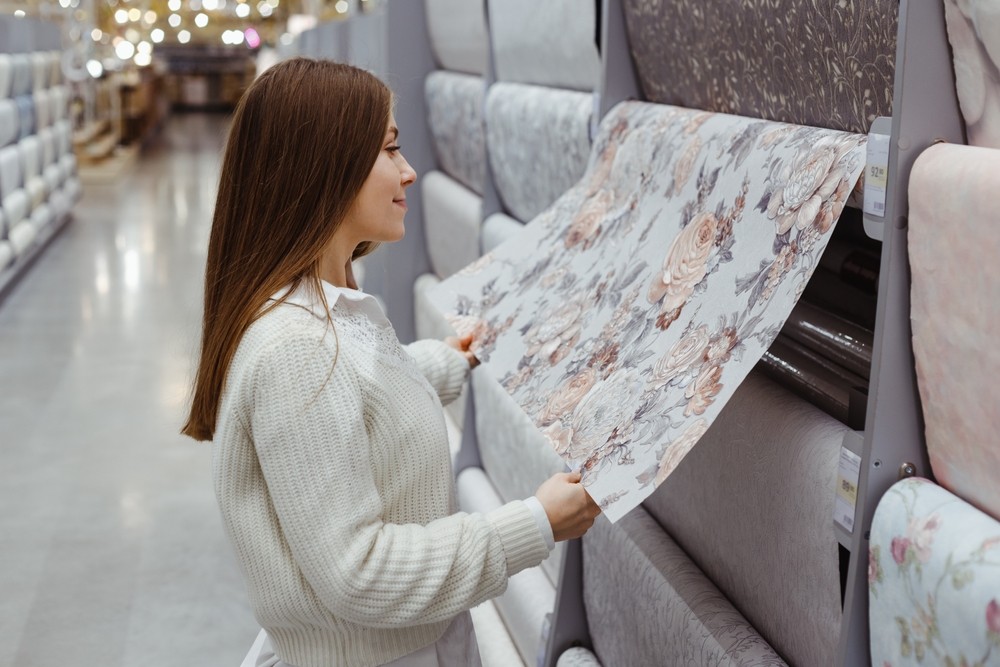Peel-and-stick wallpaper can be a convenient option for homeowners and renters seeking to refresh their spaces without committing to traditional wallpaper. This self-adhesive wall covering promises easy application, removability without damage, and a variety of designs, making it an appealing choice for those who love to change up their decor frequently. However, before you jump on the trend, it’s important to understand whether peel-and-stick wallpaper is truly a good idea for your space.
Understanding Peel-and-Stick Wallpaper
Peel-and-stick wallpaper, often called removable wallpaper, is a vinyl-based material that comes with an adhesive backing. Unlike traditional wallpaper that requires paste or glue, this type adheres directly to the wall surface when the backing paper is peeled away. The selling points are clear: it offers simplicity in application and removal, which is particularly attractive to those who want to avoid the mess and commitment associated with traditional wallpaper.
Advantages of Peel-and-Stick Wallpaper
- Easy Application: One of the most significant benefits of peel-and-stick wallpaper is its ease of application. Tools required are minimal—a utility knife, level, and smoothing tool. It’s a straightforward process of peeling the backing and pressing the adhesive side against the wall. This ease makes it a great choice for DIY projects, even for beginners.
- Temporary Solution: Ideal for renters, this wallpaper can be removed easily when it’s time to move out, leaving the walls in their original condition. For those who thrive on change, the ability to switch designs without residue or damage is a significant advantage.
- Variety of Designs: The options are virtually limitless with peel-and-stick wallpapers. From intricate patterns and bold colors to minimalist designs, there is something to suit every taste and style preference. This variety allows for personalization and creativity in home decor.
- No Specialized Tools Needed: Unlike traditional wallpaper, which often requires a specific set of tools and adhesives, peel-and-stick versions do not necessitate investing in additional equipment or hiring professionals. The entire application process is manageable with common household items.
- Cost-Effective: Without the need for extra materials and with the possibility of DIY installation, peel-and-stick wallpaper is often a more cost-effective option compared to traditional wallpaper or paint, especially when considering labor costs.
Drawbacks of Peel-and-Stick Wallpaper
Despite its many advantages, peel-and-stick wallpaper also comes with its share of potential drawbacks that should be considered before making a decision.
- Durability Concerns: While the adhesive on peel-and-stick wallpaper is designed for easy removal, it may not stand the test of time on its own. In areas that experience a lot of humidity, such as kitchens and bathrooms, or where the atmosphere can fluctuate, the wallpaper might start peeling away faster than anticipated.
- Surface Limitations: For the best results, the wallpaper needs to be applied to smooth, clean surfaces. Textured walls, newly painted surfaces, or walls with imperfections may not hold the adhesive well, resulting in uneven application or poor adherence.
- Seam Alignment Challenges: Achieving perfect seam alignment can be tricky, particularly with patterned designs. The repeat of patterns could create visible mismatches if not properly aligned, which can detract from the overall appearance.
- Not as Luxurious: While peel-and-stick wallpaper offers an array of designs, some users find that the material may not provide the same luxurious look and feel as high-end traditional wallpapers, which can feature richer textures and sophisticated patterns.
- Potential Surface Damage: Although marketed as removable without damage, peel-and-stick wallpaper can sometimes take a layer of paint with it, especially if left in place too long or removed without care. This risk can be heightened on surfaces that were not adequately prepared.
Best Practices for Application
Should you decide that peel-and-stick wallpaper is right for your space, there are key considerations and practices to follow to ensure the best results:
- Wall Preparation: Ensuring the surface is clean and smooth is critical. Dust, grease, and other residues can interfere with adhesion. Washing the walls with a mild soap solution and allowing them to dry completely is recommended.
- Accurate Measurements: Carefully measure the wall dimensions, and calculate how much wallpaper you’ll need before purchasing. Be sure to order a little extra to account for any mistakes or trimming that may be necessary.
- Controlled Environment: Attempt to apply wallpaper in a controlled environment, being mindful of temperature and humidity levels. This step helps to mitigate potential peeling that might occur in extreme conditions.
- Patience with Application: Take time to complete the process slowly and systematically. After aligning the wallpaper accurately at the top corner of the wall, slowly peel and apply, smoothing out bubbles and wrinkles as you go.
- Seam Matching Techniques: When dealing with patterned wallpaper, make sure to properly match seams before sticking. This may require unpeeling and re-aligning sections to achieve the perfect alignment.
Room Recommendations
While peel-and-stick wallpaper can work in virtually any room, certain spaces may benefit more from its characteristics.
- Living Areas and Bedrooms: With lower humidity levels and less vulnerability to heat and moisture, these rooms are ideal for peel-and-stick wallpaper, allowing for seamless application and long-lasting results.
- Accent Walls: Use peel-and-stick options to create impressive accent walls. This approach allows for impactful design statements without overwhelming the entire room.
- Home Offices and Studios: As these rooms are often repurposed, peel-and-stick wallpaper offers the flexibility for updates based on shifting needs or aesthetic enhancements.
Bathrooms and kitchens, on the other hand, may pose challenges due to moisture, which could affect the wallpaper’s longevity. Special considerations and a higher-quality adhesive version may be required to prevent peeling.
Considerations for Commitment
When considering peel-and-stick wallpaper, evaluating your personal commitment and design preferences should guide your choice. If you frequently desire change or live in a rental where permanent changes aren’t ideal, this wallpaper can offer a fantastic way to perennially update your interiors. However, if long-term durability and a premium aesthetic are your goals, traditional wallpaper or high-quality paint might be a more viable option.
Additionally, reflecting on the environmental impact is critical. Although vinyl-based products are durable, they are not often the most eco-friendly choice. Exploring companies that produce sustainable alternatives or that offer recycling programs is a conscious step forward.
Overall, peel-and-stick wallpaper serves as an excellent design choice for particular individuals and occasions. Weighing the pros and cons alongside considering your specific space requirements will determine if it’s a sensible option for you. Whether used as a temporary decorative solution or as an innovative design project, peel-and-stick wallpaper continues to offer a blend of convenience and allure in the realm of home decor.



